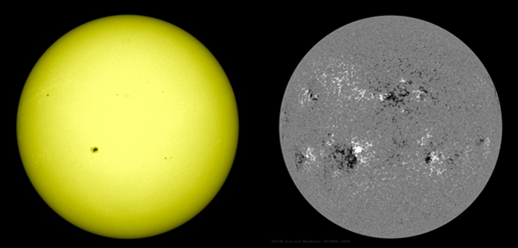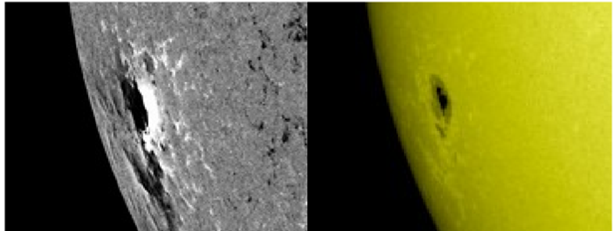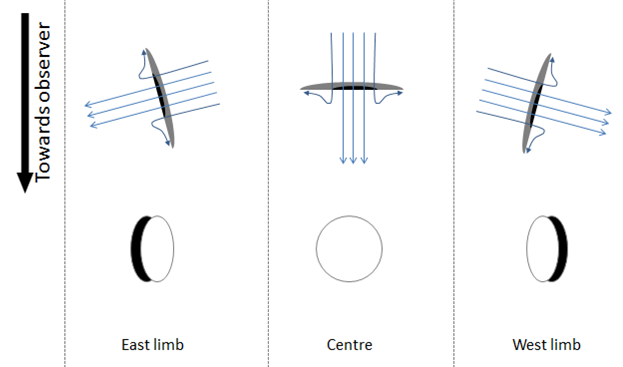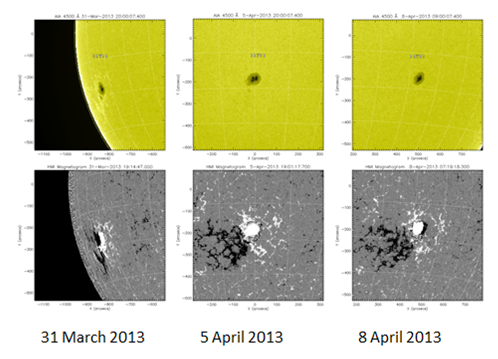Sunspots are magnetic disturbances on the surface of the Sun. This was discovered back in 1908 by George Ellery Hale. In the next few decades, technology improved and during the 1950's and 60's, Horace Welcome Babcock and Robert Benjamin Leighton developed the magnetograph (see note 1) to display the magnetic field of the entire Sun. These maps are known as magnetograms. They show essentially white and black patches, mostly corresponding to active regions and sunspot groups (See 4 April 2013 SDO image underneath).
The white patches indicate where the magnetic field is coming out of the solar surface, and the black color indicates where the magnetic field is returning to the solar interior. If we would be able to do something similar with the Earth, then there would be a white color near the Earth's magnetic south pole, and black near its magnetic north pole.

As the number of observations and experience increased, it became clear that when strong magnetic fields with opposite polarity came very close together, a solar eruption could be the result. This is an important element for space weather forecasters in their daily prevision of solar activity. A nice example is NOAA 1158, a sunspot group that produced the first X-class solar flare of solar cycle 24 on 15 February 2011. This flare was located in the middle portion of the sunspot group where opposite polarity sunspots were in an intimate embrace.

Last week, a big sunspot appeared from behind the Sun's southeast solar limb. The magnetogram of this active region NOAA 1711 revealed strong white and black patches very close together. However, no alert for strong flares was issued! What was going on?

So far in this discussion, an important element has been left out. Magnetographs usually produce magnetograms that display the magnetic field's intensity along the line of sight of the observer. However, though the magnetic field in the core of sunspots is nearly perpendicular to the solar surface, it quickly "flattens" outside the sunspot and becomes parallel to the solar surface. Otherwise said, the sunspot magnetic field is fanning out and becomes largely horizontal in the penumbra. See sketch underneath, the magnetic field lines are in blue.

So when a sunspot is near the centre of the solar disk, we see all the magnetic fields of the sunspot's core that are directly in the line of sight of the Earth. Near the limb however, these fields are directed away from the observer, and we see only the magnetic fields just outside the sunspot's core, which are -near the limb- in part directed towards the Earth (white) and in part directed away from the Earth (black). This creates an illusion of a magnetically complex group, which of course it isn't. The images underneath show NOAA 1711 (white light and corresponding magnetogram) as it transits the solar surface (Solar Monitor).

Note 1 - A magnetograph is not to be confused with a magnetometer, which is used to record geomagnetic disturbances.
 |
 |





